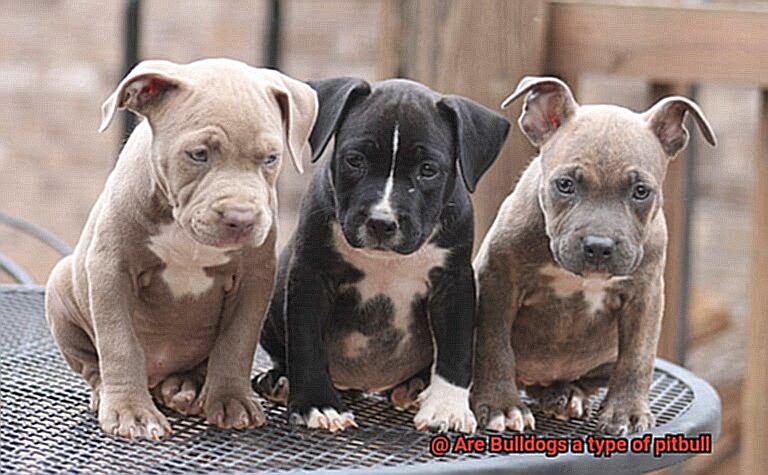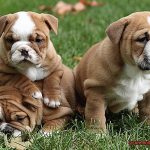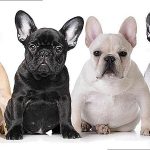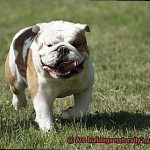Are Bulldogs a type of pitbull?
Prepare to be enlightened as we embark on a thrilling exploration of Bulldogs and Pitbulls. Brace yourselves for the ultimate showdown: are Bulldogs truly a type of Pitbull?
Together, we’ll unravel this age-old mystery by delving deep into the fascinating world of these two remarkable breeds. From their intriguing origins to their distinct physical traits and irresistible temperaments, we’ll leave no stone unturned in our quest for truth.
So, grab your favorite beverage, settle into your comfiest chair, and let’s embark on this captivating journey to uncover the undeniable differences between Bulldogs and Pitbulls.
A Brief History of Bulldogs and Pitbulls
Contents
- 1 A Brief History of Bulldogs and Pitbulls
- 2 Physical Characteristics of Bulldogs and Pitbulls
- 3 Temperament Differences Between Bulldogs and Pitbulls
- 4 Types of Bulldogs and Pitbulls
- 5 Are English Bulldogs a Type of Pitbull?
- 6 Are French Bulldogs a Type of Pitbull?
- 7 Are American Bulldogs a Type of Pitbull?
- 8 Responsible Breeding Practices for Pitbulls
- 9 Conclusion
Bulldogs and pitbulls, while distinct breeds, share a common past rooted in blood sports. In this blog post, we’ll take a journey through time to uncover their shared origins and how they have evolved into the lovable companions we know today.
Picture this: it’s the 16th to 18th centuries in England, and blood sports like bull-baiting are all the rage. Bulldogs were the stars of the show, bred for their strength and tenacity to take down bulls. With their muscular build, powerful jaws, and short snouts, these dogs were unstoppable forces in the bull-baiting arena.
The Pitbull’s Transformation:
Pitbulls, on the other hand, had a more diverse ancestry. Bred from bulldogs, terriers, and mastiffs, these agile and athletic dogs were also used in blood sports. However, as dogfighting gained popularity, pitbulls became key players in that brutal world too. Their pain tolerance, agility, and athleticism made them formidable opponents.
A Shift towards Companionship:
Fast forward to the 19th century when bull-baiting was outlawed in England. Bulldogs faced declining popularity as their purpose vanished. But dedicated breeders saw potential in creating a more gentle breed suitable for companionship. Thus began their transformation into the friendly and affectionate bulldogs we know today.
Pitbulls as Family Pets:
In the United States, pitbulls also underwent a significant transformation. As dogfighting became illegal, responsible breeders focused on temperaments rather than aggression. Today’s pitbulls are known for their loyalty, energy, and intelligence, making them excellent family pets when raised and trained with love and care.
Bulldogs vs. Pitbulls: The Distinctions:
While bulldogs and pitbulls share a history in blood sports, it’s important to understand their unique characteristics. Bulldogs are known for their muscular build, short snouts, and wrinkled faces, while pitbulls are recognized for their athleticism, agility, and strong jaws. Each breed has its own distinct appearance and temperament.
Physical Characteristics of Bulldogs and Pitbulls
Bulldogs and Pitbulls are two popular dog breeds with distinct physical characteristics that set them apart. Understanding these differences can help owners better care for and appreciate their pets. In this article, we will explore the unique features of Bulldogs and Pitbulls, providing valuable insights for French Bulldog owners.
Bulldog Physical Characteristics:
- Head: Bulldogs have a large, square-shaped head with deep-set eyes and a prominent brow. Their wrinkled face gives them a distinctive appearance.
- Body: Bulldogs have a compact, muscular body with a broad chest and a low-slung profile. Their sturdy build and thick neck contribute to their stocky appearance.
- Coat: Bulldogs have a short, smooth coat that requires minimal grooming. Common coat colors include brindle, fawn, and white.
- Size: Bulldogs are medium-sized dogs, typically weighing between 40-50 pounds and standing 12-16 inches tall at the shoulder.
Pitbull Physical Characteristics:
- Head: Pitbulls have a broad skull with a well-defined jawline and strong cheek muscles. Their muzzle is relatively short compared to Bulldogs.
- Body: Pitbulls have a muscular and athletic build, giving them an agile and powerful appearance. They have a longer body compared to Bulldogs.
- Coat: Pitbulls have a short coat that is dense and glossy. They come in various colors, including brindle, black, blue, and red.
- Size: Pitbulls are medium to large-sized dogs, weighing between 30-60 pounds and standing around 17-21 inches tall at the shoulder.
Temperament Differences Between Bulldogs and Pitbulls
It’s always helpful to understand the temperament differences between breeds, especially when considering adding another furry friend to your family. In this article, we’ll explore the distinct temperaments of Bulldogs and Pitbulls, helping you make informed decisions and ensuring a harmonious environment for your French Bulldog.
Bulldogs: Calm, Gentle, and Family-Friendly:
Bulldogs are renowned for their calm and gentle nature, making them ideal family pets. Here are some key temperament traits of Bulldogs:
- Friendliness: Bulldogs are generally friendly and good with children, making them excellent companions for families.
- Laid-back Lifestyle: Bulldogs tend to have a leisurely lifestyle and are not as energetic or active as Pitbulls. They enjoy lounging around and taking it easy.
- Tolerance Towards Other Animals: Bulldogs are typically more tolerant of other animals, including other dogs. They often get along well with other pets, making them good candidates for multi-pet households.
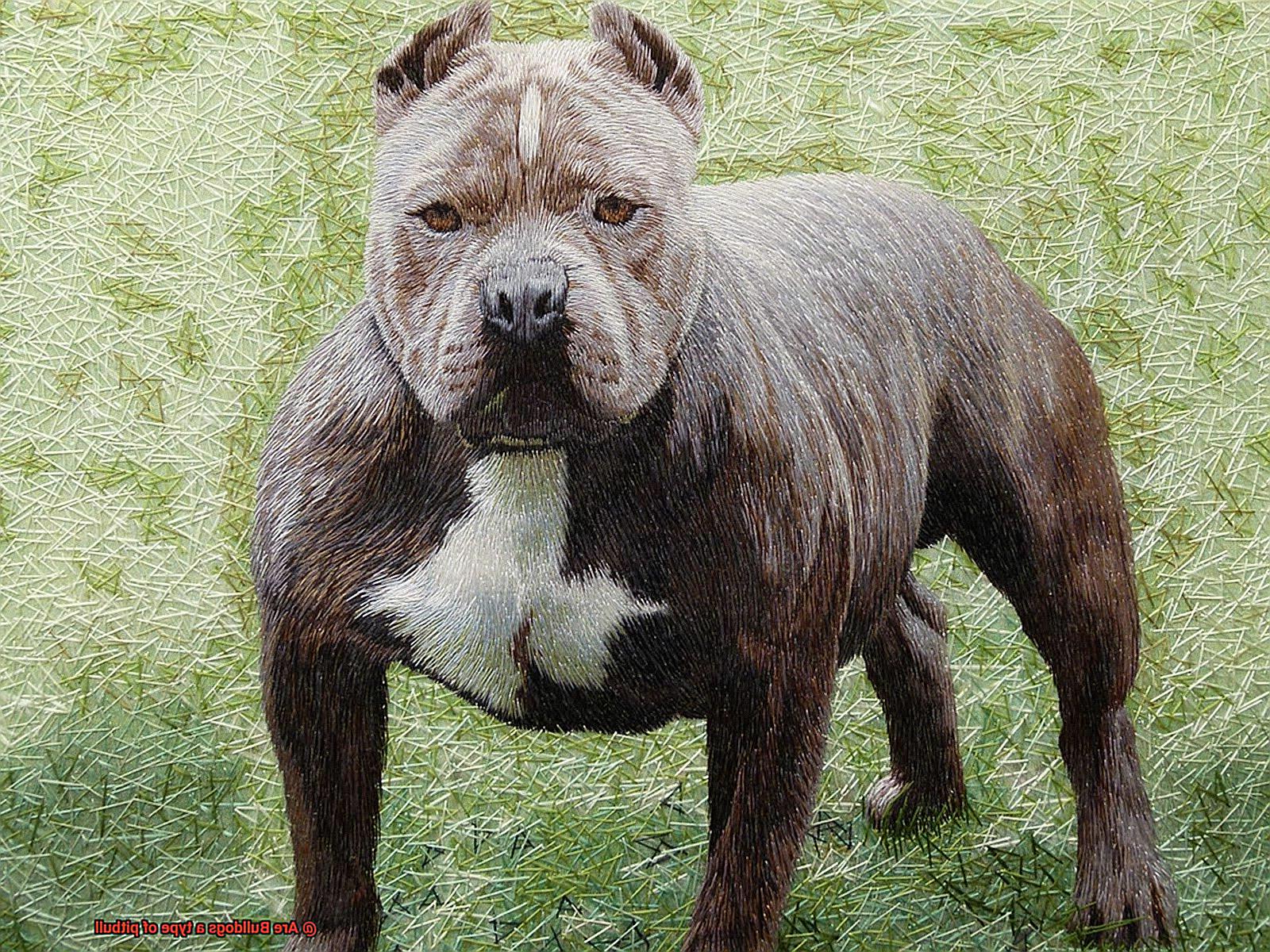
Pitbulls: Energetic, Loyal, and Protective:
Pitbulls have a reputation for being high-energy and athletic. Understanding their temperament traits is essential before considering adding one to your family:
- Energy and Exercise Needs: Pitbulls require regular exercise and mental stimulation to prevent boredom and destructive behavior. They thrive in an active lifestyle that includes activities like long walks, playtime, and training sessions.
- Loyalty and Protectiveness: Pitbulls are known for their loyalty towards their family members. They can be very affectionate but may also display protective instincts. They’ll go to great lengths to keep their loved ones safe.
- Socialization and Training: Pitbulls may require more socialization and training to ensure they behave well around other dogs and people. Early socialization is key to preventing any potential aggression towards other animals.
Types of Bulldogs and Pitbulls
Well, you’ve come to the right place. Bulldogs and Pitbulls may look similar in some ways, but they are actually two distinct breeds with their own unique characteristics. Let’s dive in and explore the differences.
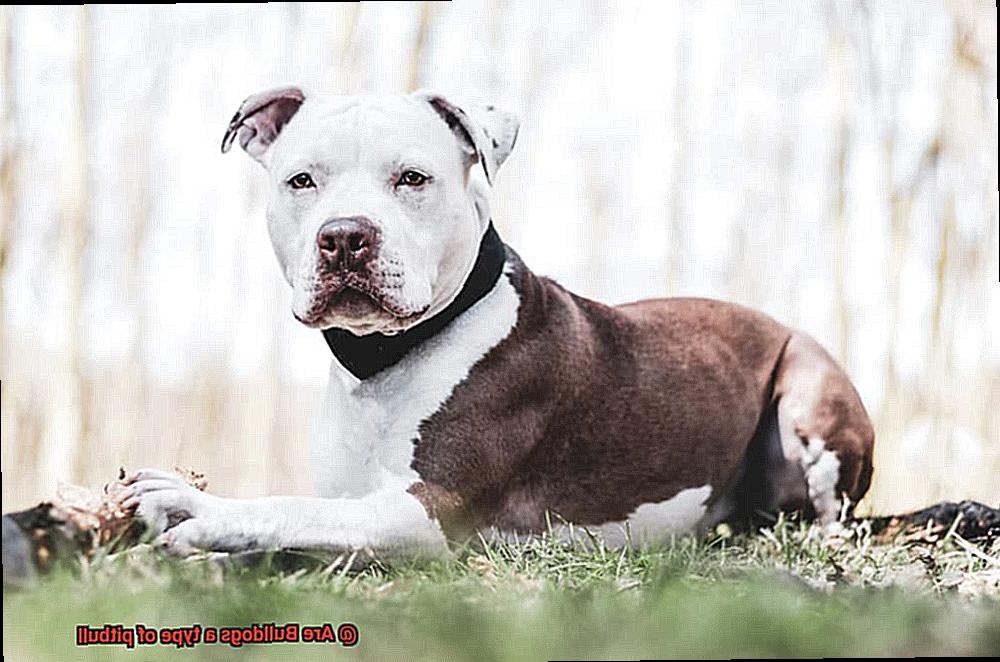
First up, let’s talk about Bulldogs. Bulldogs are known for their muscular build, wrinkled faces, and pushed-in noses. There are different types of Bulldogs, such as the English Bulldog, French Bulldog, and American Bulldog.
The English Bulldog is a medium-sized breed that is friendly and affectionate. They make great family pets because of their gentle and good-natured temperament. French Bulldogs, on the other hand, are smaller in size compared to English Bulldogs but have a playful personality that will melt your heart. They are adaptable and perfect for apartment living. Lastly, the American Bulldog is larger and more athletic than the other two types. They are loyal, courageous, and protective, making them ideal for guarding or protection work.
Now let’s move on to Pitbulls. It’s important to note that “Pitbull” is not a specific breed but rather an umbrella term for several different breeds that share similar physical characteristics. Some common Pitbull breeds include the American Pit Bull Terrier, Staffordshire Bull Terrier, American Staffordshire Terrier, and Bull Terrier.
The American Pit Bull Terrier is perhaps the most well-known type of Pitbull. Despite their muscular appearance, they are actually gentle and affectionate towards humans, especially children. Staffordshire Bull Terriers are also commonly referred to as Pitbulls. They have a similar physical appearance to American Pit Bull Terriers but are slightly smaller and have a more compact build. Staffies are playful and outgoing, making them wonderful family pets.
American Staffordshire Terriers are another type of Pitbull breed. They are intelligent and loyal, excelling in activities like obedience training and agility competitions. Lastly, Bull Terriers have a unique egg-shaped head and a mischievous nature that will keep you on your toes. They require regular exercise and mental stimulation to keep them happy.
In conclusion, Bulldogs and Pitbulls are two different breeds with their own distinct characteristics. Bulldogs, including the English Bulldog, French Bulldog, and American Bulldog, have their own unique traits that make them great companions. Pitbulls, on the other hand, include several breeds like the American Pit Bull Terrier, Staffordshire Bull Terrier, American Staffordshire Terrier, and Bull Terrier. Each breed within these categories has its own personality and traits. Understanding these differences will help you choose the right breed for your family and lifestyle.
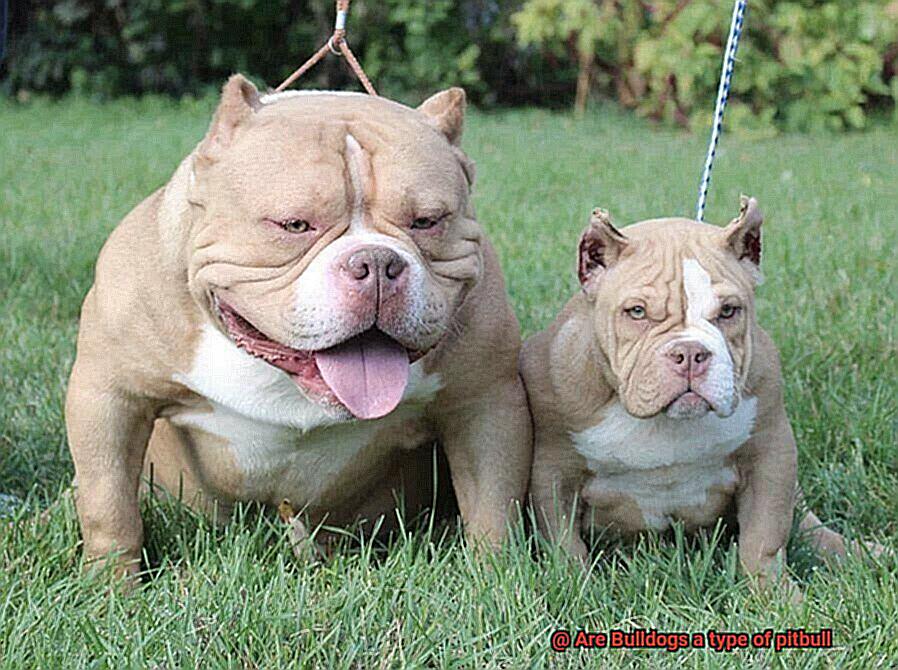
Are English Bulldogs a Type of Pitbull?
Well, grab a cup of coffee and get ready for an enlightening journey as we dive into the world of Bulldogs and Pitbulls.
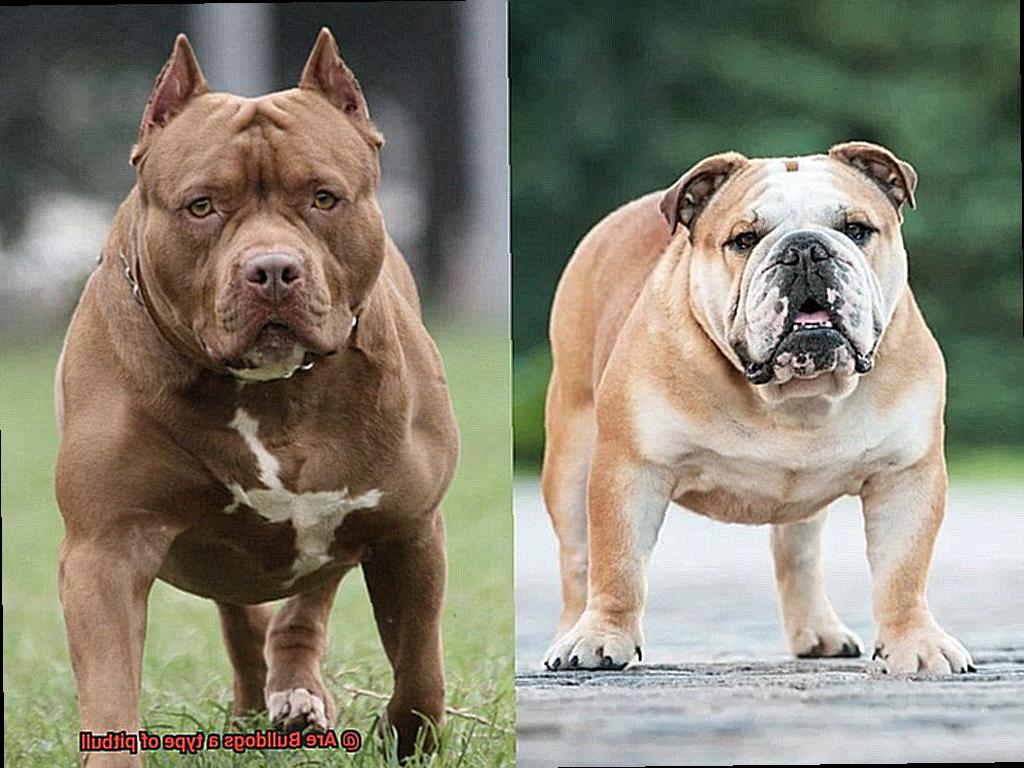
Origins and Characteristics:
Let’s start with the basics. English Bulldogs originated in England and were initially bred for bull-baiting. On the other hand, Pitbulls trace their roots back to the United States and were bred for various purposes, including bull-baiting, dog fighting, and as working dogs. Bulldogs have a stocky build, a wrinkled face that oozes cuteness, and a pushed-in nose. Meanwhile, Pitbulls exhibit a more athletic physique with a muscular build and a more pronounced muzzle.
Temperament:
Now let’s talk about personalities. English Bulldogs are renowned for their docile nature, friendliness, and gentle disposition. They make great companions for families of all sizes. Pitbulls, on the other hand, are often described as energetic bundles of joy. They are highly intelligent and fiercely loyal to their human counterparts.
Physical Similarities:
While it’s true that both Bulldogs and Pitbulls share some physical similarities like a wide chest and strong jawline, it’s important to note that these characteristics are not exclusive to these breeds alone. It’s like saying all brunettes look the same – it just isn’t true.
Breed-Specific Legislation (BSL):
Unfortunately, due to misconceptions surrounding Pitbull breeds, some regions have implemented Breed-Specific Legislation (BSL) targeting them. However, it is crucial to understand that English Bulldogs are not included in these regulations since they are distinct breeds with different temperaments.
Are French Bulldogs a Type of Pitbull?
Let’s put this debate to rest once and for all.
French Bulldogs: Petite Companions with Bat-Like Ears
Originating from France in the 1800s, French Bulldogs were bred to be loyal and affectionate companions. With their small size, compact bodies, and adorable bat-like ears, they quickly became a favorite among dog lovers. Frenchies have a distinct appearance with a square-shaped head and a flat face that sets them apart from other breeds.
Pitbulls: A Diverse Group of Muscular Canines
Contrary to popular belief, Pitbulls are not a specific breed but comprise several breeds, including the American Pit Bull Terrier, American Staffordshire Terrier, and Staffordshire Bull Terrier. Known for their muscular build and broad chest, Pitbulls come in various sizes and have longer muzzles compared to French Bulldogs.
Size Matters: French Bulldogs vs. Pitbulls
French Bulldogs are petite in comparison to most Pitbull breeds. Typically weighing between 16-28 pounds, they are perfect for those seeking a smaller companion. On the other hand, Pitbulls can range from 30-70 pounds or even more, depending on the specific breed. It’s clear that these two breeds differ significantly in size.
Temperament: Loving vs. Misunderstood
French Bulldogs are renowned for their affectionate and playful nature, making them excellent family pets. They get along well with children and other animals due to their friendly demeanor. In contrast, Pitbull breeds have unjustly gained a reputation due to their association with dogfighting in the past. However, many Pitbulls are loving and loyal family pets when properly trained and socialized.
Responsible Ownership for Both Breeds
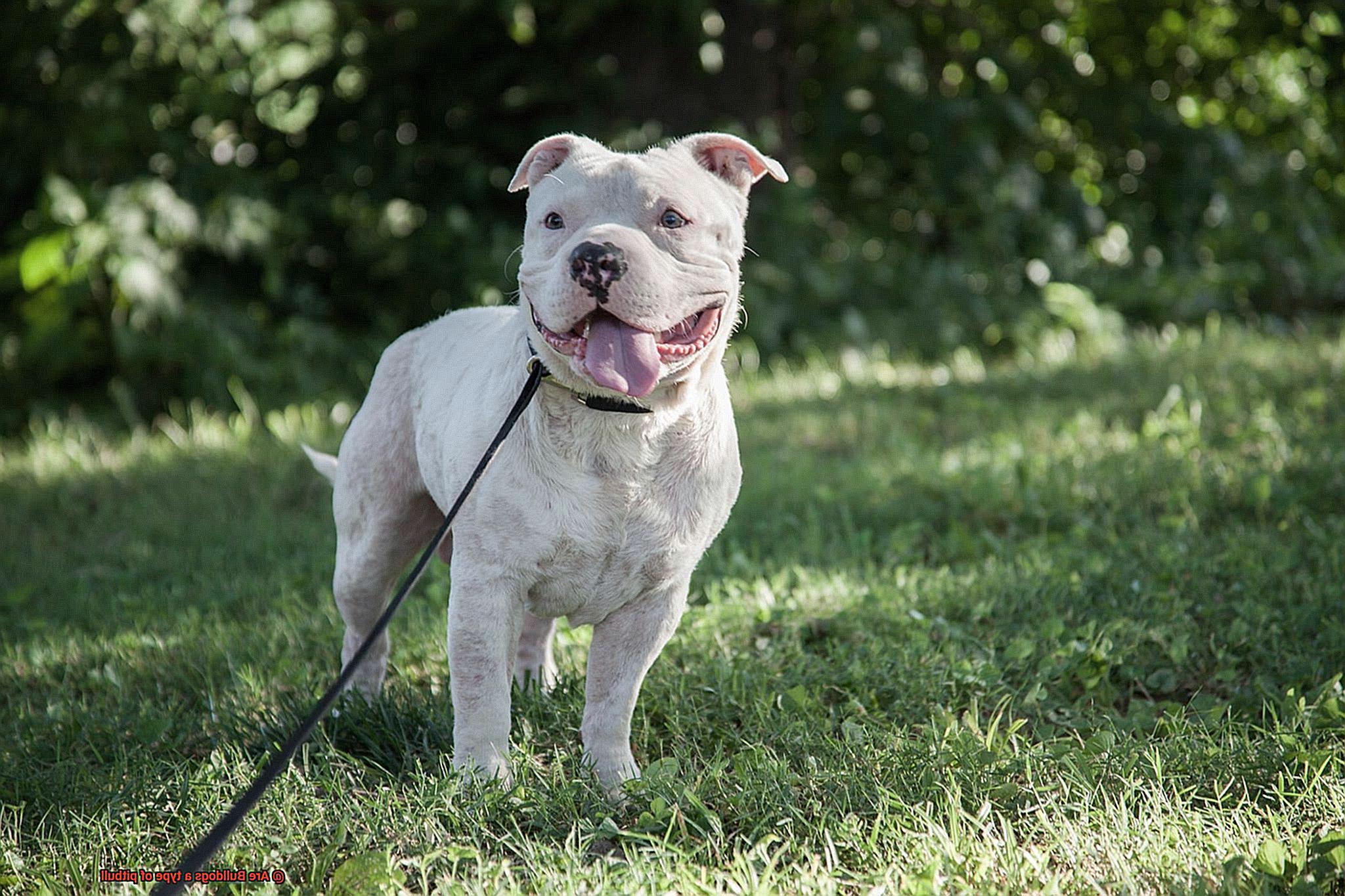
Whether you choose a French Bulldog or a Pitbull, responsible ownership is crucial. Both breeds require proper training, socialization, and exercise to thrive. Be prepared to invest time and effort into their care to ensure they become well-rounded and happy companions.
Are American Bulldogs a Type of Pitbull?
American Bulldogs and Pitbulls are two breeds that are often mistaken for each other due to their similar physical appearance. However, it is important to understand that they are distinct breeds with unique characteristics. In this article, we will explore the differences between American Bulldogs and Pitbulls and discuss why it is crucial to recognize their individual traits.
Physical Differences:
American Bulldogs have a larger and more muscular build compared to Pitbulls. They have a square-shaped head, strong jaws, and a broad chest. On the other hand, Pitbulls are known for their lean and athletic bodies, with a more streamlined head and a narrower chest.
Temperament and Behavioral Traits:
American Bulldogs are known for their protective nature, loyalty, and agility. They make excellent guard dogs and are fiercely dedicated to their families. Pitbulls, on the other hand, are renowned for their intelligence, athleticism, and loyalty. They have a strong desire to please their owners and are often used as therapy dogs due to their gentle and loving nature.
Origins and Ancestry:
American Bulldogs originated in the United States, specifically in the Southern states. They were bred for working purposes such as guarding livestock and property. Pitbulls, on the other hand, have a more complex ancestry that includes breeds like the Staffordshire Bull Terrier and the American Pit Bull Terrier. They were initially bred for bull-baiting but later became popular as family pets.
Misconceptions and Breed-Specific Legislation (BSL):
The confusion between American Bulldogs and Pitbulls has led to misconceptions about both breeds. Unfortunately, breed-specific legislation often targets these breeds based on misinformation and stereotypes about their temperament and potential for aggression. It is important to remember that individual temperament varies within a breed, and responsible ownership plays a significant role in a dog’s behavior.
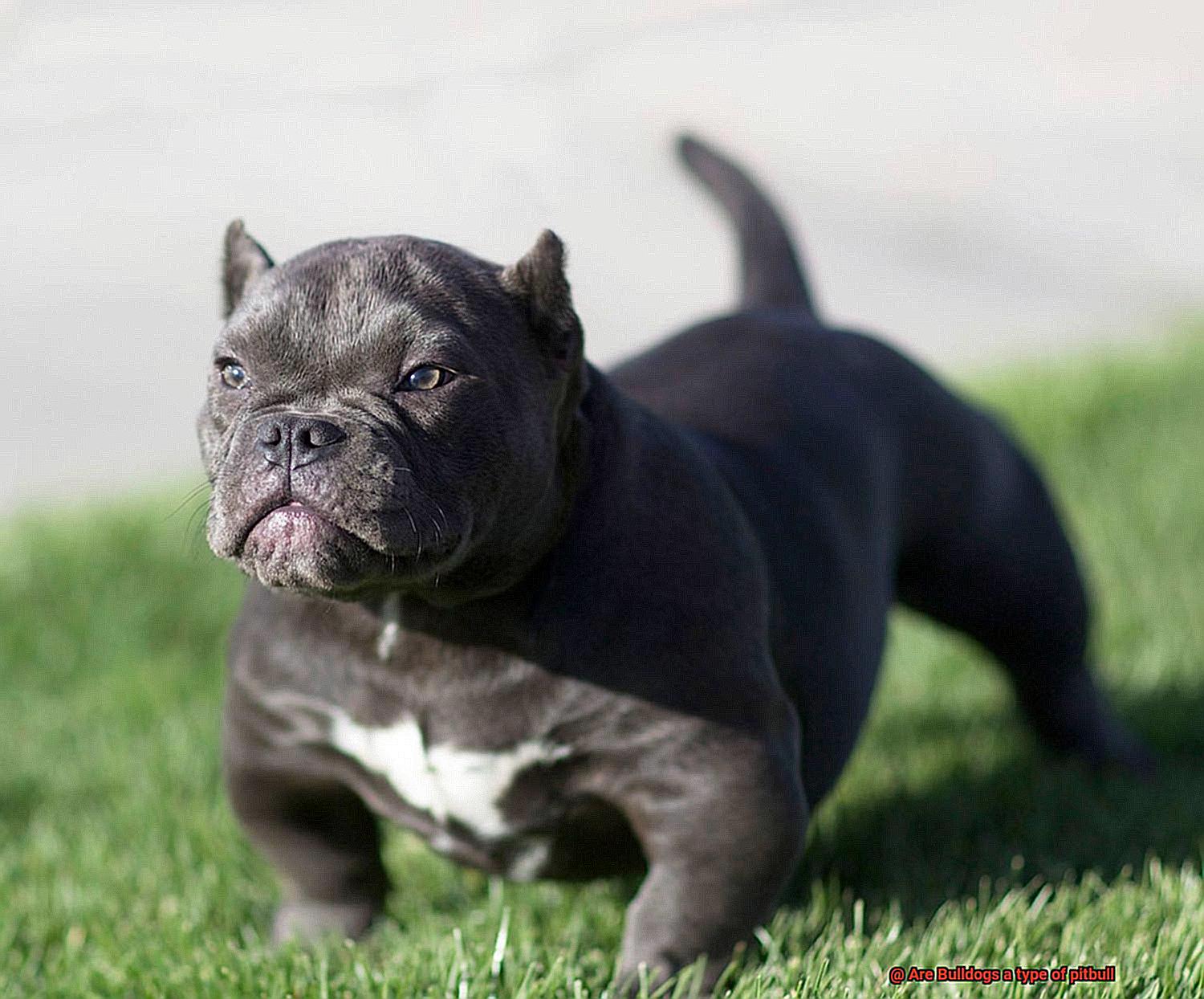
Responsible Breeding Practices for Pitbulls
Well, you’ve come to the right place. In this comprehensive guide, we will dive into the world of responsible breeding for Pitbulls, ensuring that you have all the knowledge you need to be a responsible breeder.
First and foremost, responsible breeders prioritize the overall health and temperament of the dogs they breed. This means that health testing is an absolute must.
By conducting thorough health screenings, including hip and elbow evaluations, eye examinations, and genetic testing for common Pitbull health concerns such as hip dysplasia, heart disease, and allergies, breeders can identify any potential genetic health issues that may be passed down to offspring.
But it’s not just about physical health – temperament is equally important. Responsible breeders evaluate the temperament of their dogs to ensure they are breeding dogs with stable and friendly personalities.
This is done through temperament testing, which helps identify any aggressive or fearful traits that may not be suitable for breeding. Ethical breeders will only breed dogs that meet the breed standard and have a good temperament.
Speaking of breed standards, it’s crucial for breeders to have a good understanding of the breed standard set by kennel clubs or breed organizations. They should aim to produce dogs that adhere to these standards in terms of physical appearance, size, and temperament. This ensures that the breed’s unique characteristics are preserved.
When it comes to selecting mating pairs, responsible breeders carefully consider compatibility and genetic diversity. Inbreeding or breeding closely related dogs can increase the risk of inherited health problems and should be avoided. Furthermore, breeders should also consider the overall population of Pitbulls and work towards maintaining genetic diversity within the breed.
Excessive breeding practices contribute to overpopulation and the production of unhealthy puppies. Responsible breeders avoid this by limiting their breeding practices and ensuring that each litter is carefully planned and well-thought-out. This way, they can focus on producing healthy and well-adjusted puppies.
But responsible breeding doesn’t stop once the puppies are born. It continues with proper socialization and early training. Responsible breeders provide their puppies with the necessary experiences to ensure they grow up to be well-adjusted and obedient adults.
Additionally, they offer support and guidance to puppy buyers, providing them with information on proper care, training, and nutrition.
Lastly, responsible breeders should be prepared to take back any puppies they have bred if the new owners are unable to care for them properly. This helps prevent dogs from ending up in shelters or falling into the wrong hands.
9I2JQ-P03HE” >
Conclusion
In conclusion, Bulldogs and Pitbulls may share some similarities in appearance and temperament, but they are distinct breeds with their own unique characteristics.
Bulldogs are known for their stocky build, wrinkled face, and gentle nature. On the other hand, Pitbulls have a more muscular physique and a reputation for being strong-willed and energetic.
Bulldogs are not a type of Pitbull, but rather two separate breeds that deserve recognition for their individual qualities.
